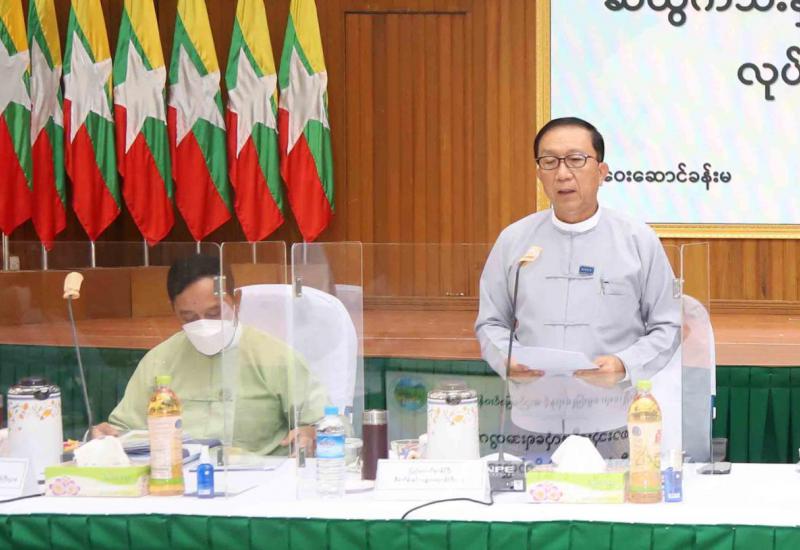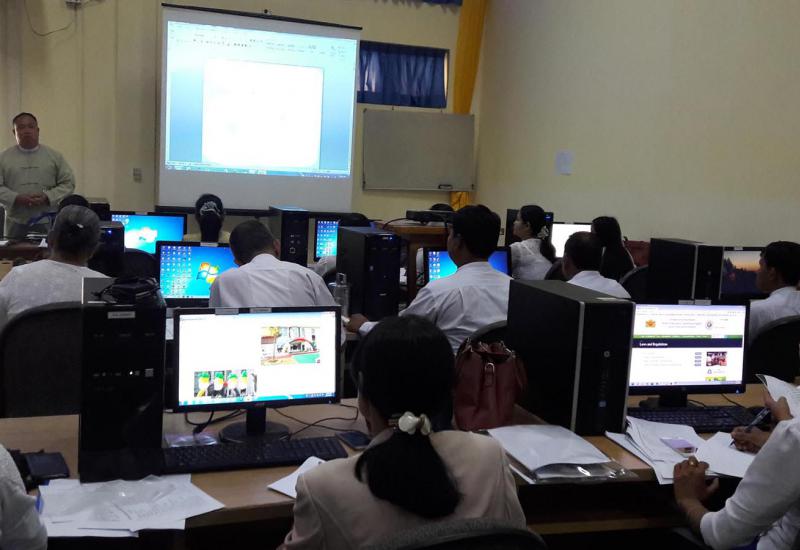Message to the World Food Day Ceremony/Celebration of 16 October 2021
Dear respected citizens,
First and foremost, on this auspicious World Food Day, I would like to extend my best wishes for your good health, physical and mental wellbeing.
As food security and nutrition are a necessity of daily life for human beings, the World Food Day celebrated all over the world must be commemorated as a special day for the world population.
The Food and Agriculture Organization of the United Nations issued a statement that:
- More than three billion people (almost 40 percent of the world’s population) cannot afford a healthy diet.
- 10 percent of people are affected by unsafe food.
- Today’s agri-food systems are exposing profound inequalities and injustices.
- Climate change is causing lower crop yields and livestock productivity, declines in fisheries, aquaculture and agro-forestry production, and changes in the nutrient composition.
- 14 percent of the food is lost and 17 percent is wasted at consumer level.
- The Covid-19 pandemic has induced an economic recession that could add up to 100 million or more to the 690 million people already suffering from hunger.
Thus, all the countries in the world have to launch effective policy measures to strive for the production of nutritious safe quality produces throughout the agricultural and production chains, reduction of crop losses, utilization of sustainable varieties, cultural practices adapted to the changing climate and safeguarding reasonable income for the agricultural producers.
As 70% of the Myanmar population lives in rural areas and the mainstay economy is based on agriculture, in line with the United Nation’s Sustainable Development Goals, the government has laid down Myanmar Sustainable Development Plan (MSDP), Rural Development Strategic Framework (RDSF) and Agricultural Development Strategy (ADS).
In 2019-2020, crop sub-sector contributed 14.1% and livestock and fishery sub-sector 7.7% to the Gross Domestic Product (GDP) of the country and agricultural export accounted for 38% of total export. The plans are going on self sufficiency of rice and in higher production of good eating quality rice for foreign export. Emphasis is put on enhancing production more out of the present sown area.
Though various oil crops are sown in the country, edible oil is still not sufficient demanding to import from abroad. Therefore, efforts are made, with intention of reducing the expenditure of foreign currency, to expand sown areas of other oil crops, beside groundnut and sesame, such as oil palm, sunflower, corn, canola and soybean areas and to increase their yields, to promote oil production through by-products such as rice bran, cotton seeds, and corn. On the other hand, educational programs are conducted to reduce oil consumption for health benefits.
The government is also encouraging, in the textile sector, the promotion of cotton as a major crop aiming at more job opportunities and clothing and to modernize the finished products in industrial area.
Although the costs of inputs, transport and production during the Covid-19 pandemic are rising, it is estimated that there will be no effect on crop production in the country due to fine weather ensuring enough water. To ensure food production the following attempts have been made in the Nay Pyi Taw Union Territory and all the States and Regions:
- To extend sown areas of important food crops
- To distribute quality seeds at reasonable prices
- To promote private seed production through cooperatives and companies
- Sowing of suitable crop varieties according to climate change
- Growing of cash crops in the areas where irrigation water is not sufficient
- Growing of short-term vegetable crops
- To achieve regional food sufficiency
- Promotion of agricultural extension
In order to fulfil the need of people’s meat consumption, distribution of quality varieties of cows, buffaloes, goats, sheep, pigs, ducks and chickens, upgrading the animal quality by means of artificial insemination, and setting guidelines to follow Good Animal Husbandry Practices - GAHP for the animal farms are accomplished.
In the fishery sector, to strengthen the quotas in local and foreign markets, Good Aquaculture Practices - GAqP are made to follow; regional fish farming trainings are conducted; providing fish seed; setting up laboratories; giving supports to cold water fish species breeding and farming, cage fish farming in rivers and creek are in progress.
In 2020-2021, in the midst of Covid-19 pandemic, over 1265 million baskets (26 million MT) of paddy, the major food crop, were produced from over 17.2 million acres, oil seed crops - groundnut, sesame and sunflower - more than 184 million baskets (4.12 million MT) out of over 7.21 million acres, pulses and beans over 156.89 million baskets (5.13 million MT) from over 9.81 million acres, meat 1.05 million MT, fish 5.4 million MT and eggs 2283.81 million.
Furthermore, to reduce the escalating malnutrition of the nation, 5-year Multi Sectoral National Plan of Action for Nutrition (MSNPAN) has been carried out through concerted efforts of respective Ministries and organizations.
As a result of all round endeavours to produce quality agricultural produces, rice and food is not only self-sufficient but sold out to foreign markets.
As it is necessary for a country to achieve all round development, enhancing the States and other backward regions will narrow the gap between urban and rural areas. Concerning rural socioeconomic development, upgrading drinking water facilities and accessibility to electricity, establishing revolving funds, vocational trainings, betterment of people’s personal hygiene, protecting environmental pollutions are stepped up by the hand-in-hand efforts of the departments and organizations concerned. Technology, investment and market for the domestic industries have been sought after through negotiations with civil society organizations.
Myanmar has become a member of the UN’s Convention of Biological Diversity in February 1995 and since then, national biodiversity strategy and action plans (2015-2020) are laid down to function the conservation of biodiversity and now five subject-wise task groups are performing their duties in collaboration. In addition, drawing national biodiversity framework and policy is also in process.
With the intention to sustainable fish resources, imposing a closed season, controlling illegal fishing by Vessel Monitoring System, area demarcation of no fishing zones depending on fish species and fishing area and restriction of fish catching devices are scrutinized. Research on evaluation and analysis of fish resources is also in momentum.
Dear respected citizens,
The World Food Day’s slogan this year is “Our actions are our future. Better Production, Better Nutrition, a Better Environment and a Better Life.”
For better socioeconomic life and environment of our people, the government’s efforts to endeavour sufficiency of safe and nutritious foods, to narrow down poverty gap and to realize rural development programmes are in line with the World Food Day’s slogan. And the government sincerely sends the pledge that we will double our efforts along with the wholehearted collaboration of our people on this auspicious day.





